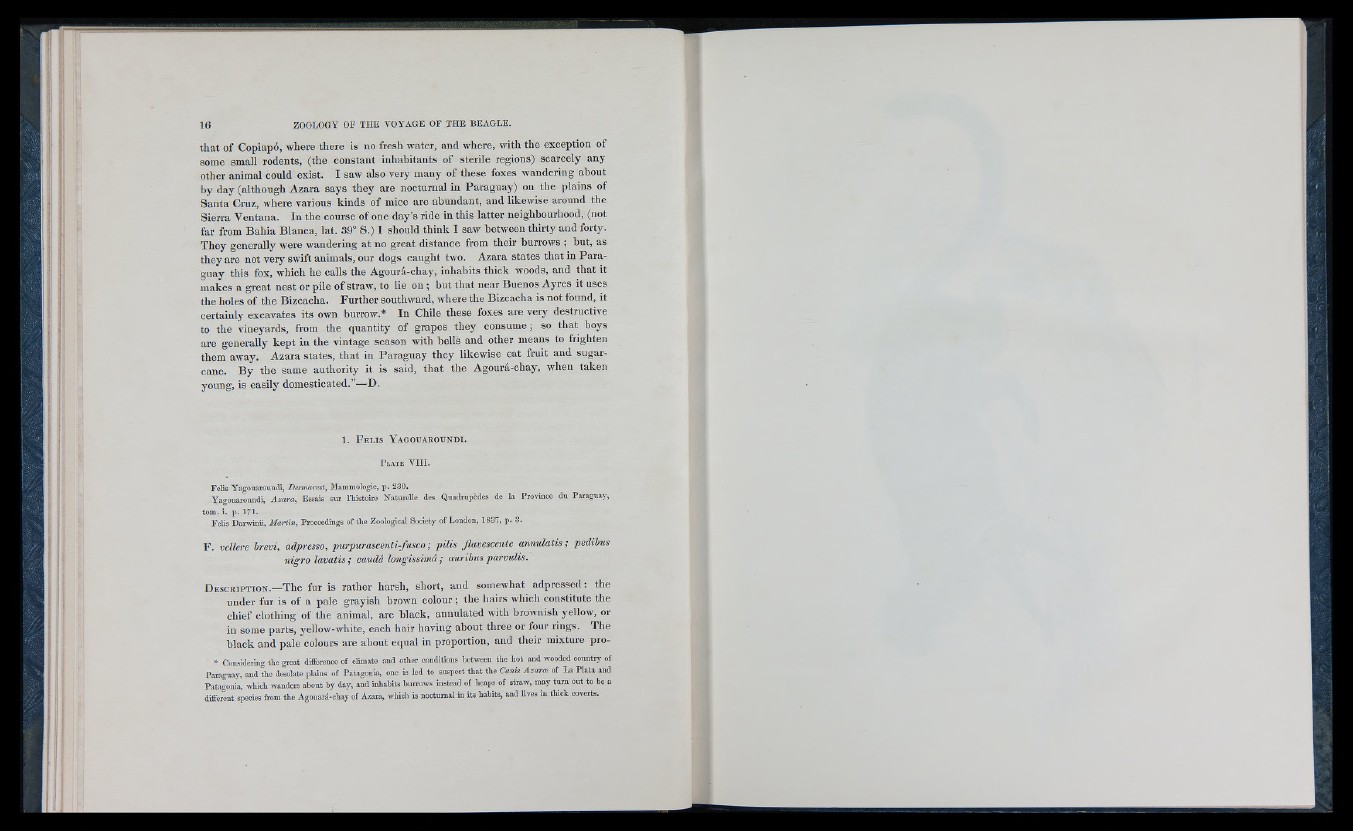
that of Copiap6, where there is no fresh water, and where, with the exception of
some small rodents, (the constant inhabitants of sterile regions) scarcely any
other animal could exist. I saw also very many of these foxes wandering about
by day (although Azara says they are nocturnal in Paraguay) on the plains of
Santa Cruz, where various kinds of mice are abundant, and likewise around the
Sierra Ventana. In the course of one day’s ride in this latter neighbourhood, (not
far from Bahia Blanca, lat. 39° S.) I should think I saw between thirty and forty.
They generally were wandering at no great distance from their burrows ; but, as
they are not very swift animals, our dogs caught two. Azara states that in Paraguay
this fox, which he calls the Agoura-chay, inhabits thick woods, and that it
makes a great nest or pile of straw, to lie on ; but that near Buenos Ayres it uses
the holes of the Bizcacha. Further southward, where the Bizcacha is not found, it
certainly excavates its own burrow.* In Chile these foxes are very destructive
to the vineyards, from the quantity of grapes they consume; so that boys
are generally kept in the vintage season with bells and other means to frighten
them away. Azara states, that in Paraguay they likewise eat fruit and sugarcane.
B y the same authority it is said, that the Agoura-chay, when taken
young, is easily domesticated.”—D.
1. F e l is Y a g o u a r o u n d i.
P l a t e V III.
Felis Yagouaroundi, Desmarest, Mammologie, p. 230.
Y.igouaroundi, A sa ra, Essais sur l’histoire Naturelle des Quadrupèdes de la Province du Paraguay,
torn. i. p. 171.
Felis Danvinii, M artin, Proceedings of tlie Zoological Society of London, 1837, p. 8.
F. vellere brevi, adpresso, purpurascenti-fusco ; pilis Jiavescente annulatis ; pedibus
nigro lavatis ; caudâ longissimâ ; aurihus parvulis.
D e s c r i p t i o n .— The fur is rather harsh, short, and somewhat adpressed: the
under fur is of a pale grayish brown colour ; the hairs which constitute the
cliief clothing of the animal, are black, annulated with brownish yellow, or
in some parts, yellow-white, each hair having about three or four rings. The
black and pale colours are about equal in proportion, and their mixture pro-
• Considering the great difference of climate and other conditions between tho hot and wooded conntry of
Paragnav, and the desolate plains of Patagonia, one is led to suspect that tho Oanit A za ræ of La Plata and
Patagonia, whioh wanders about by day, and inhabits burrows instead of heaps of straw, may turn out to he a
different species from the Agonaia-chay of Azara, which is noetnmal in its habits, and lives in thick coverts.